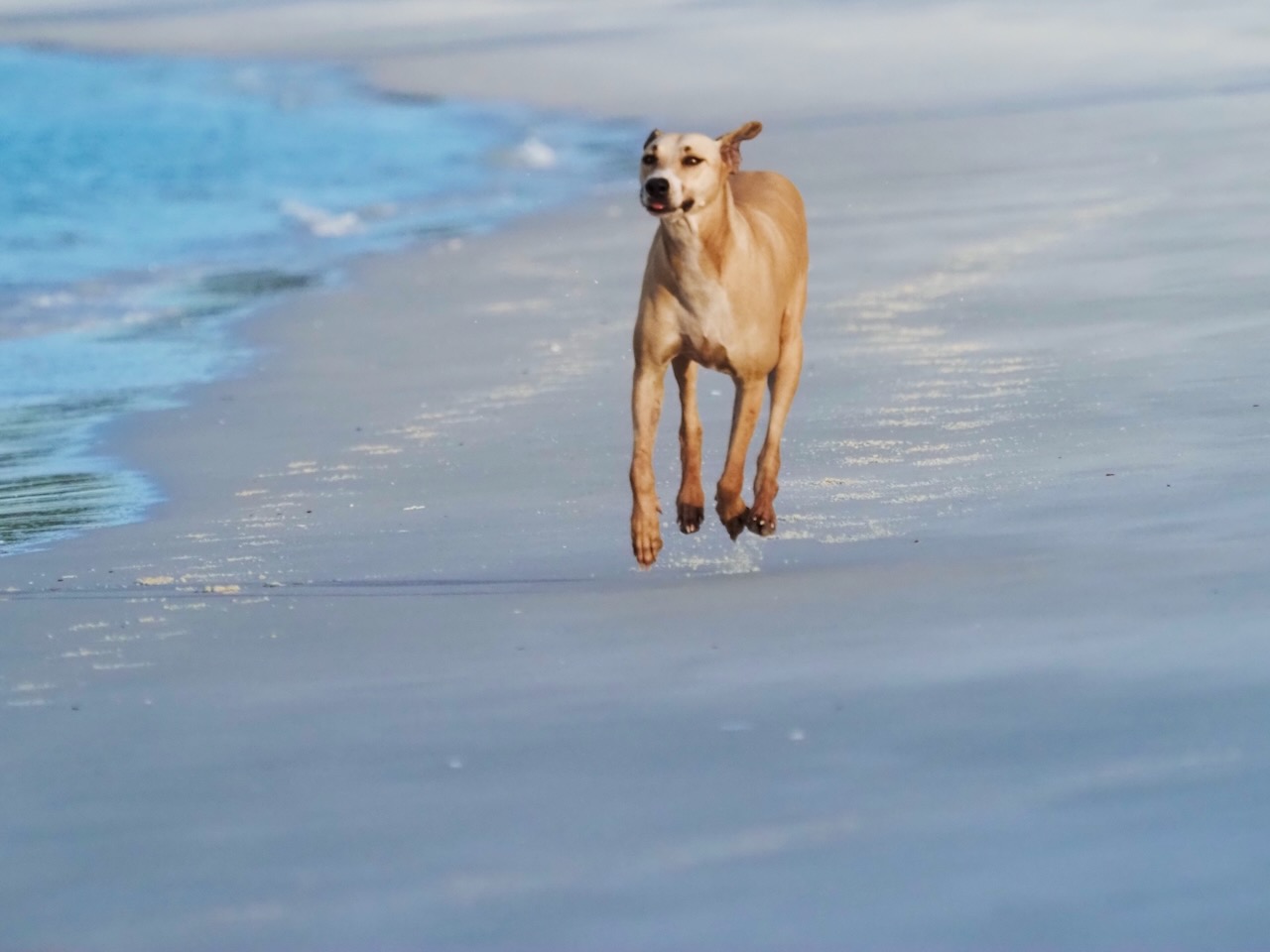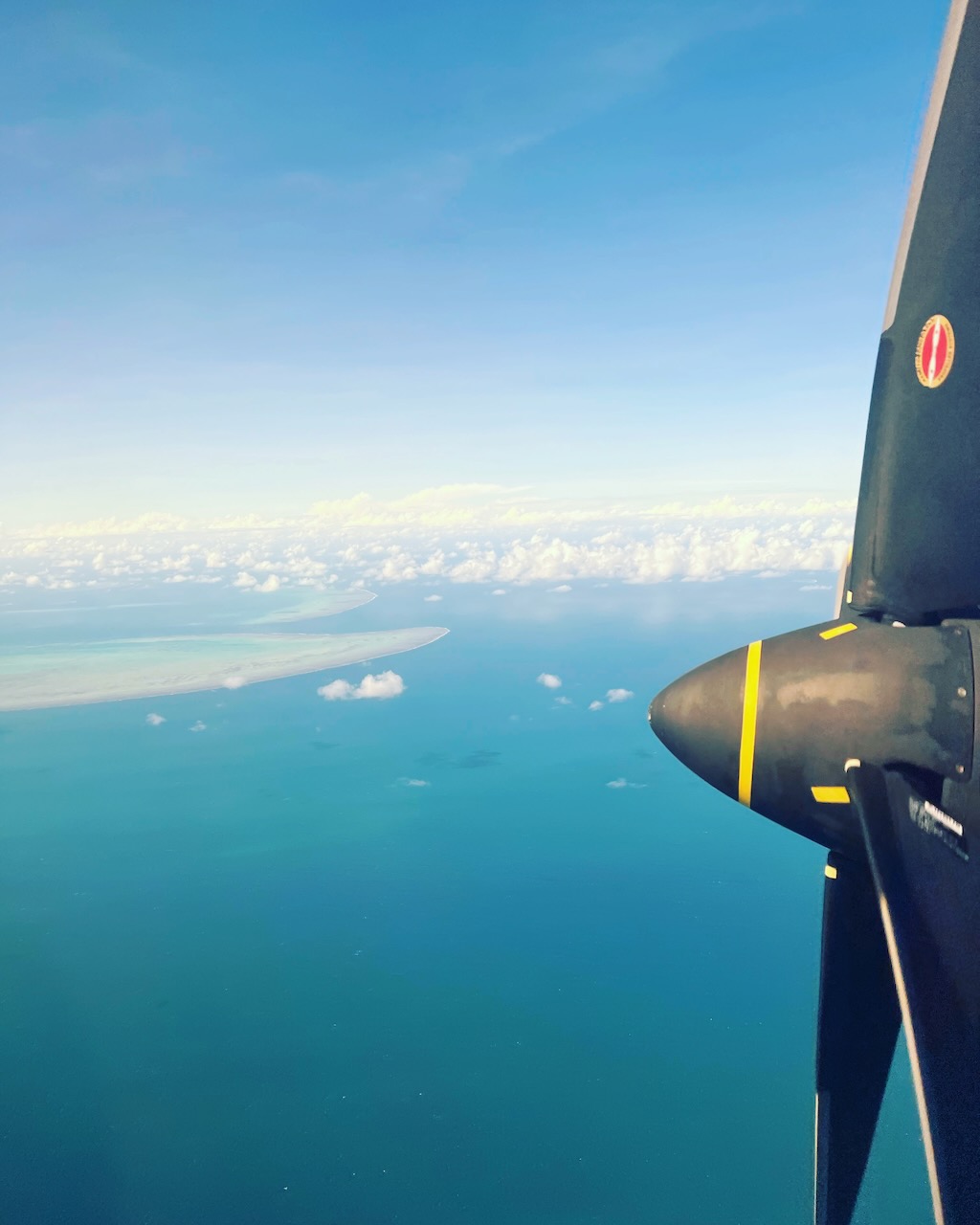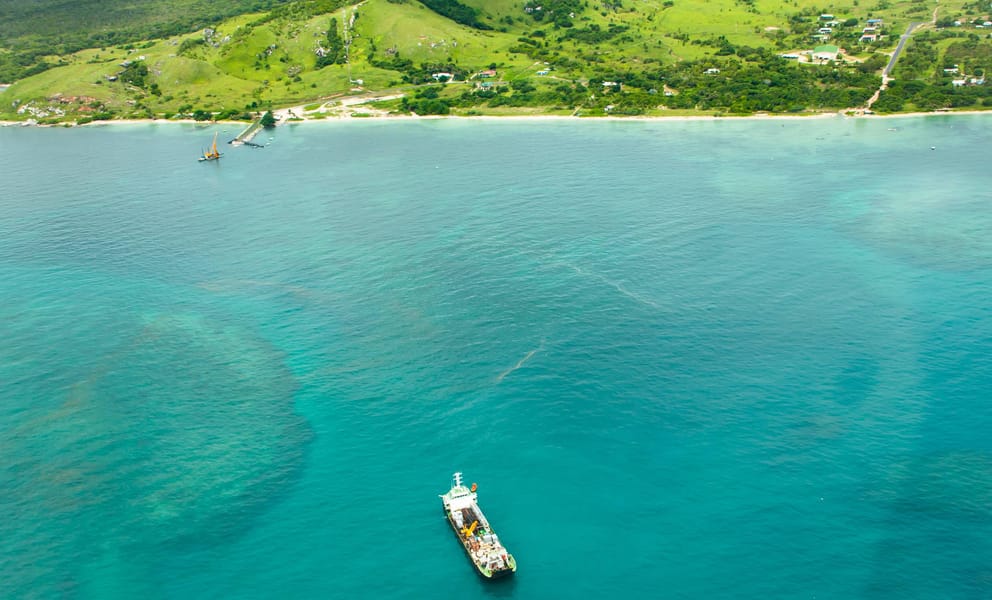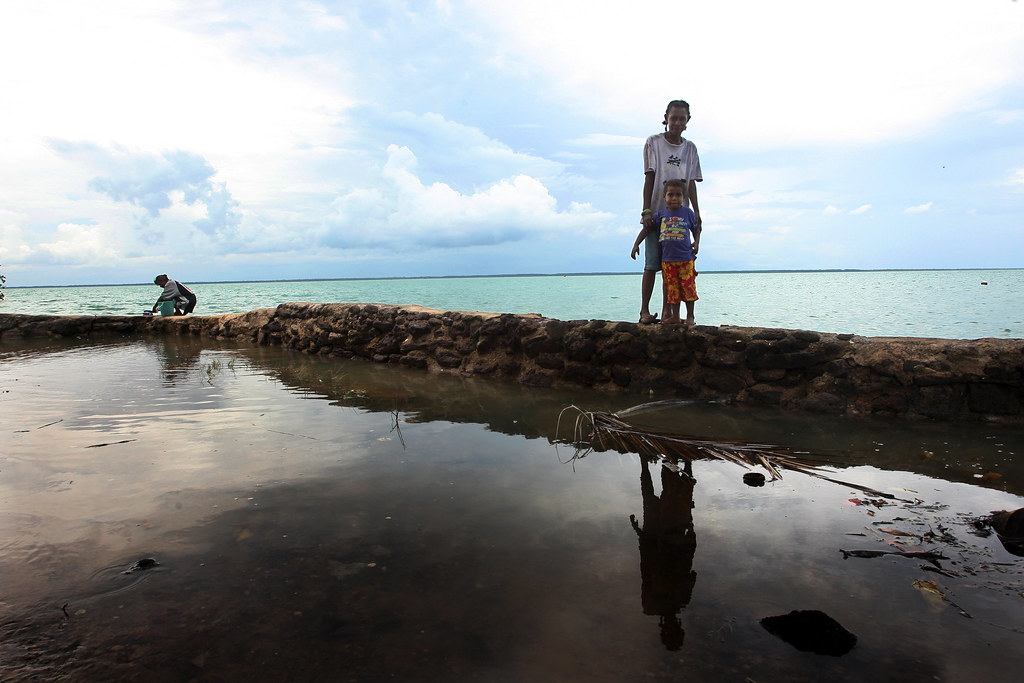Barramundi Fishing Ad Read more [...]
-
Photos
-
Profile
When I think of The Torres Strait Islands, it makes me feel happy. As incredible as the landscape and ocean or indeed many islands and Sand Cays, it’s the people that will. Have you wanting to go back? The older women always look so amazing in their colourful dresses.The laughter and conversation between them make you want to be part of it.The importance of food and family as a cultural combination could only be rivalled by places like Italy. I remember being in a supermarket on Thursday Island buying, of all things, cigarettes for a client. I only had cash and had enough for a couple of packets (200+ dollars). He wanted a newspaper as well, but he probably wanted the other item more, so I put the newspaper back.Standing outside the supermarket, a beautifully dressed, elder woman came up to me and gave me the newspaper, which cost eight dollars, by the way and said he couldn’t be without reading the news whilst having a smoke.How often do you see that type of kindness and understanding?
I remember being in a supermarket on Thursday Island buying, of all things, cigarettes for a client. I only had cash and had enough for a couple of packets (200+ dollars). He wanted a newspaper as well, but he probably wanted the other item more, so I put the newspaper back.Standing outside the supermarket, a beautifully dressed, elder woman came up to me and gave me the newspaper, which cost eight dollars, by the way and said he couldn’t be without reading the news whilst having a smoke.How often do you see that type of kindness and understanding?
 Thursday Island (Waiben) is a vibrant hub in the Torres Strait Islands. Located off the northern coast of Queensland, Australia, it serves as the region’s administrative, commercial, and cultural centre. With a diverse population reflecting its rich history of indigenous, Asian, and European influences, Thursday Island boasts a unique blend of traditions, languages, and cuisines. The island is renowned for its stunning natural beauty, historic sites, and vibrant community events. Its strategic location makes it a vital transportation hub, connecting the Torres Strait Islands to mainland Australia and Papua New Guinea.
Thursday Island (Waiben) is a vibrant hub in the Torres Strait Islands. Located off the northern coast of Queensland, Australia, it serves as the region’s administrative, commercial, and cultural centre. With a diverse population reflecting its rich history of indigenous, Asian, and European influences, Thursday Island boasts a unique blend of traditions, languages, and cuisines. The island is renowned for its stunning natural beauty, historic sites, and vibrant community events. Its strategic location makes it a vital transportation hub, connecting the Torres Strait Islands to mainland Australia and Papua New Guinea.
default
Horn Island (Narupai) is a key island in the Torres Strait archipelago. Situated near Thursday Island, it is an important transport and logistics centre, with an airport and port facilities. Despite its small size, Horn Island boasts a rich history, including its role as a military base during World War II. Today, it is home to a vibrant community, with cultural events and attractions showcasing its unique heritage. Visitors can explore historical sites, enjoy outdoor activities, and experience the warm hospitality of the local population. Horn Island remains an essential gateway to the Torres Strait region. Moa Island (Banks Island)is one of the larger islands in the Torres Strait. Located southwest of Thursday Island, it holds significant cultural importance for the Torres Strait Islanders. Moa Island is renowned for its traditional practices, including art, dance, and storytelling, which are deeply rooted in its rich cultural heritage. Visitors can experience the island’s unique traditions, explore its stunning natural landscapes, and learn about its history through cultural tours and community events. Moa Island continues to play a vital role in preserving and celebrating Torres Strait Islander culture for future generations.
Moa Island (Banks Island)is one of the larger islands in the Torres Strait. Located southwest of Thursday Island, it holds significant cultural importance for the Torres Strait Islanders. Moa Island is renowned for its traditional practices, including art, dance, and storytelling, which are deeply rooted in its rich cultural heritage. Visitors can experience the island’s unique traditions, explore its stunning natural landscapes, and learn about its history through cultural tours and community events. Moa Island continues to play a vital role in preserving and celebrating Torres Strait Islander culture for future generations. Badu Island, also known as Mulgrave Island, is a culturally significant island in the Torres Strait. Home to a vibrant community, it is renowned for its rich cultural heritage, particularly its music and dance traditions. Visitors can experience the island’s unique culture through traditional performances, art exhibitions, and cultural festivals. Badu Island’s stunning natural beauty, with pristine beaches and lush tropical landscapes, offers outdoor activities such as fishing, snorkelling, and hiking opportunities. The island’s warm hospitality and strong sense of community make it a welcoming destination for those seeking to immerse themselves in Torres Strait Islander culture.
Badu Island, also known as Mulgrave Island, is a culturally significant island in the Torres Strait. Home to a vibrant community, it is renowned for its rich cultural heritage, particularly its music and dance traditions. Visitors can experience the island’s unique culture through traditional performances, art exhibitions, and cultural festivals. Badu Island’s stunning natural beauty, with pristine beaches and lush tropical landscapes, offers outdoor activities such as fishing, snorkelling, and hiking opportunities. The island’s warm hospitality and strong sense of community make it a welcoming destination for those seeking to immerse themselves in Torres Strait Islander culture. Saibai Island, situated near the Papua New Guinea border, is a culturally diverse jewel in the Torres Strait. Its close proximity to neighbouring countries contributes to its unique blend of traditions and languages. Saibai Island’s rich ecosystem supports diverse flora and fauna, making it a haven for nature enthusiasts. Visitors can explore the island’s lush rainforests, pristine beaches, and traditional villages, experiencing the warmth and hospitality of its residents. Cultural festivals and events showcase Saibai Island’s vibrant heritage, offering insights into its indigenous customs and way of life. The island’s beauty and cultural richness make it a captivating destination.
Saibai Island, situated near the Papua New Guinea border, is a culturally diverse jewel in the Torres Strait. Its close proximity to neighbouring countries contributes to its unique blend of traditions and languages. Saibai Island’s rich ecosystem supports diverse flora and fauna, making it a haven for nature enthusiasts. Visitors can explore the island’s lush rainforests, pristine beaches, and traditional villages, experiencing the warmth and hospitality of its residents. Cultural festivals and events showcase Saibai Island’s vibrant heritage, offering insights into its indigenous customs and way of life. The island’s beauty and cultural richness make it a captivating destination. Boigu Island, the northernmost inhabited island in the Torres Strait, is a remote and culturally rich destination. Its proximity to Papua New Guinea influences its unique blend of traditions and languages. Boigu Island’s stunning landscapes include pristine beaches, mangrove forests, and lush tropical vegetation, offering opportunities for outdoor adventures and wildlife encounters. Visitors can immerse themselves in the island’s rich cultural heritage by participating in traditional activities, such as dancing, storytelling, and handicrafts. The island’s warm and welcoming community provides a glimpse into Torres Strait Islander life, making Boigu Island a captivating destination for cultural exploration and appreciation of natural beauty.
Boigu Island, the northernmost inhabited island in the Torres Strait, is a remote and culturally rich destination. Its proximity to Papua New Guinea influences its unique blend of traditions and languages. Boigu Island’s stunning landscapes include pristine beaches, mangrove forests, and lush tropical vegetation, offering opportunities for outdoor adventures and wildlife encounters. Visitors can immerse themselves in the island’s rich cultural heritage by participating in traditional activities, such as dancing, storytelling, and handicrafts. The island’s warm and welcoming community provides a glimpse into Torres Strait Islander life, making Boigu Island a captivating destination for cultural exploration and appreciation of natural beauty.The Torres Strait Islands boast a vibrant and intricate cultural history deeply rooted in the traditions of its indigenous peoples, the Torres Strait Islanders. These island communities have thrived in harmony with the land and sea for millennia, fostering unique practices and beliefs.The Torres Strait Islands, situated between the northern tip of Queensland, Australia, and Papua New Guinea, possess a rich and diverse history spanning thousands of years. Indigenous peoples, including the Torres Strait Islanders, have inhabited these islands for millennia, maintaining intricate cultures deeply intertwined with the sea and land.
European explorers first encountered the islands in the 1600s, notably by Dutch navigators Willem Janszoon and Luis Váez de Torres. However, significant European contact didn’t occur until the 19th century when British colonisers arrived in Australia. This encounter brought about immense changes for the Torres Strait Islanders, including the introduction of Christianity, European diseases, and increased interaction with the outside world.
Central to Torres Strait Islander culture are traditions passed down through generations, including storytelling, art, music, and dance. Oral traditions preserve ancestral knowledge, recounting myths, legends, and histories that connect islanders to their land, ancestors, and spiritual beliefs. Artistic expressions such as wood carving, weaving, and intricate pearl shell work showcase craftsmanship and serve as mediums for cultural storytelling and identity.
Music and dance are pivotal in cultural ceremonies and celebrations, reflecting the islanders’ deep spiritual connections and community bonds. Festivals and ceremonies provide occasions for sharing cultural heritage, including traditional dances like the “Malu Mai” and “Zorba,” accompanied by unique rhythms and instruments.
Colonial influences have also left their mark on Torres Strait Islander culture, with European settlement changing traditional ways of life. However, island communities have demonstrated resilience in preserving and revitalising their cultural heritage, maintaining strong connections to their identity, land, and traditions. Today, the cultural history of the Torres Strait Islands stands as a testament to the richness, diversity, and resilience of its indigenous peoples.
-
Map



